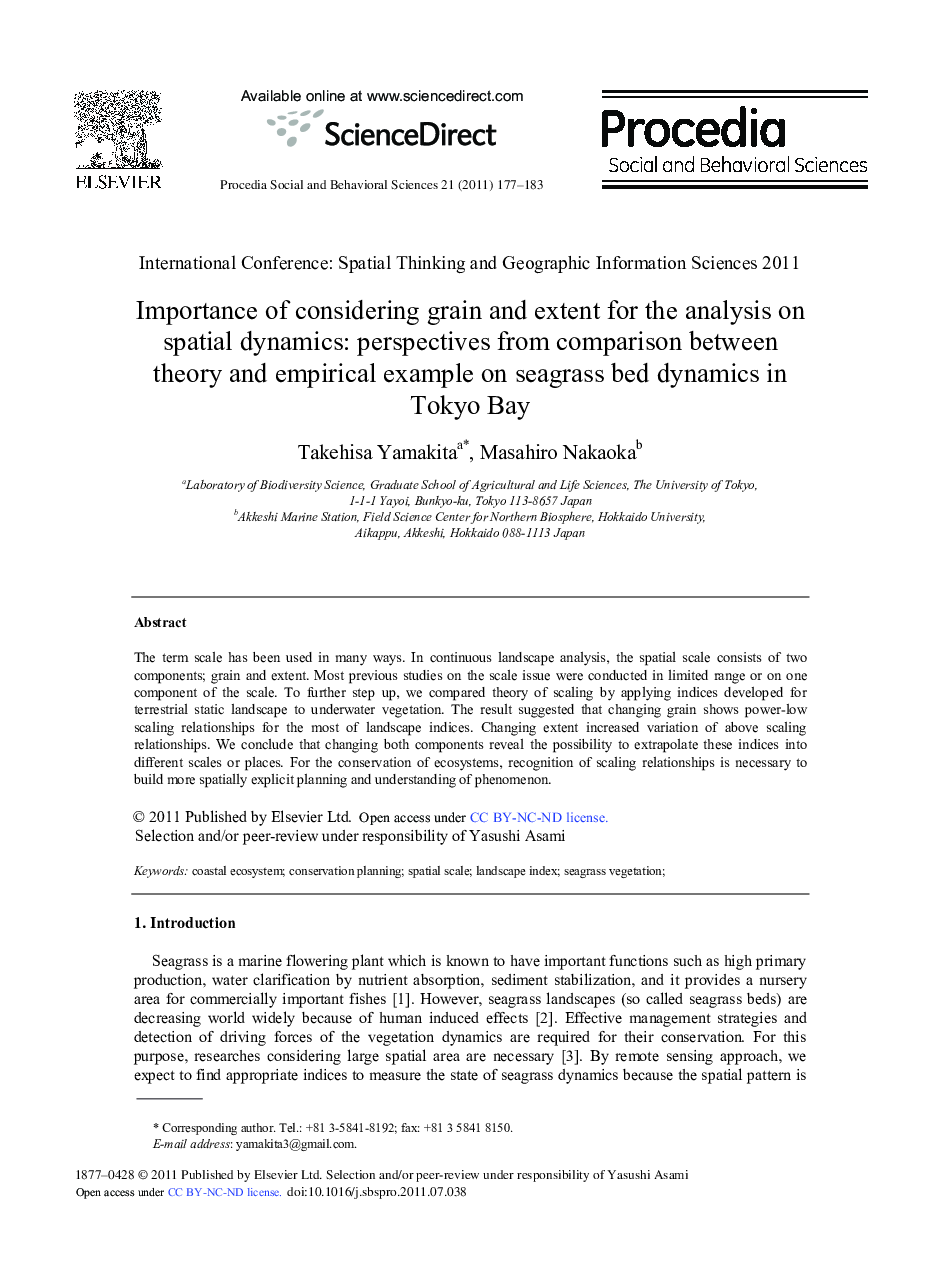| Article ID | Journal | Published Year | Pages | File Type |
|---|---|---|---|---|
| 1123940 | Procedia - Social and Behavioral Sciences | 2011 | 7 Pages |
The term scale has been used in many ways. In continuous landscape analysis, the spatial scale consists of two components; grain and extent. Most previous studies on the scale issue were conducted in limited range or on one component of the scale. To further step up, we compared theory of scaling by applying indices developed for terrestrial static landscape to underwater vegetation. The result suggested that changing grain shows power-low scaling relationships for the most of landscape indices. Changing extent increased variation of above scaling relationships. We conclude that changing both components reveal the possibility to extrapolate these indices into different scales or places. For the conservation of ecosystems, recognition of scaling relationships is necessary to build more spatially explicit planning and understanding of phenomenon.
